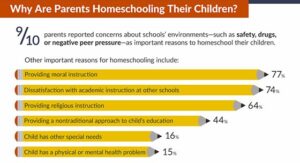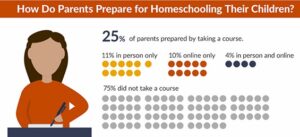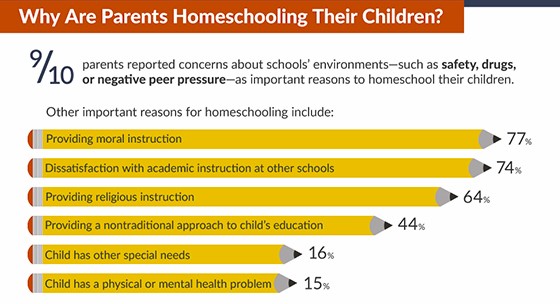With ESSA largely pushing accountability back to the states, the continued growth of the charter sector, increasing backlash against standardized testing, and the recent announcement that school voucher advocate Betsy DeVos is President-Elect Trump’s choice for Secretary of Education, it is clear that education policy is trending towards local control and school choice. One overlooked aspect of this shift is the growth of homeschooling.
Earlier this month, the American Institutes for Research (AIR) and the U.S. Department of Education’s National Center for Education Statistics (NCES) released a report analyzing homeschooling trends in the United States from 1999 to 2012. The practice has become much more popular over the past decade, as the homeschooling rate doubled from 1.7 percent in 1999 to 3.4 percent in 2012. That means there are now roughly 1.8 million students being schooled at home. By comparison, charter schools — which receive much of the education sector’s attention — enroll just under three million students.
So, as the homeschooling sector continues to grow, here are four things you should know:
1.) Homeschooling parents are motivated by concerns with the school environment, academics, and religion.
According to the AIR/NCES report, 91 percent of homeschooling parents expressed concern with the environment of schools, including safety, drug use, and peer pressure. Seventy-four percent were dissatisfied with the academic environment. Additionally, 77 percent wanted to provide moral instruction and 64 percent wanted to provide religious instruction.

Source: Homeschooling in the United States, American Institutes for Research.
2.) Most homeschooling parents lack teaching credentials, but that might not matter much.
The AIR/NCES report also finds that the majority of homeschooling parents (56 percent) have less than a bachelor’s degree, and 75 percent took no coursework to prepare them to teach. However, this might not have much impact on teaching quality. Although every state requires teachers at institutional schools to have at least a bachelor’s degree, there is no evidence that a college degree is necessary for quality teaching. Research also suggests that having a master’s degree has little if any effect on student achievement. Additionally, the evidence of the impact that teacher preparation has on teacher quality is broadly inconclusive.

Source: Homeschooling in the United States, American Institutes for Research.
3.) Homeschooled students tend to outperform their counterparts in institutional schools.
According to a 2010 paper by leading homeschooling researcher Dr. Brian Ray: “In most studies, the homeschooled have scored, on average, at the 65th to 80th percentile on standardized academic achievement tests, compared to the national school average of the 50th percentile (which is largely based on public schools).”
4.) There are multiple factors that may help explain this result.
Homeschooled students are typically less diverse and more economically advantaged than their public school counterparts. Eighty-three percent of homeschooled students are white, compared to about 50 percent of public school students. An overwhelming majority of homeschooled students (89 percent) live in households above the federal poverty level, while roughly half of public school students qualify for free- and reduced-price lunch.
Homeschooled students also benefit from more individualized attention and the smallest class size possible. Research shows that class size reduction positively impacts student achievement, and “looping” — the practice of keeping groups of students with the same teacher over multiple years — may also benefit students.
Additionally, homeschooled students may experience fewer interruptions during the school day. They are able to avoid inconveniences like school commutes, taking attendance in homeroom, and classroom changes. Eliminating these structural barriers could translate to more instructional time for homeschooled students.
As the number of homeschooled students is likely to keep increasing, the education sector should recognize homeschooling as an increasingly mainstream education option.
